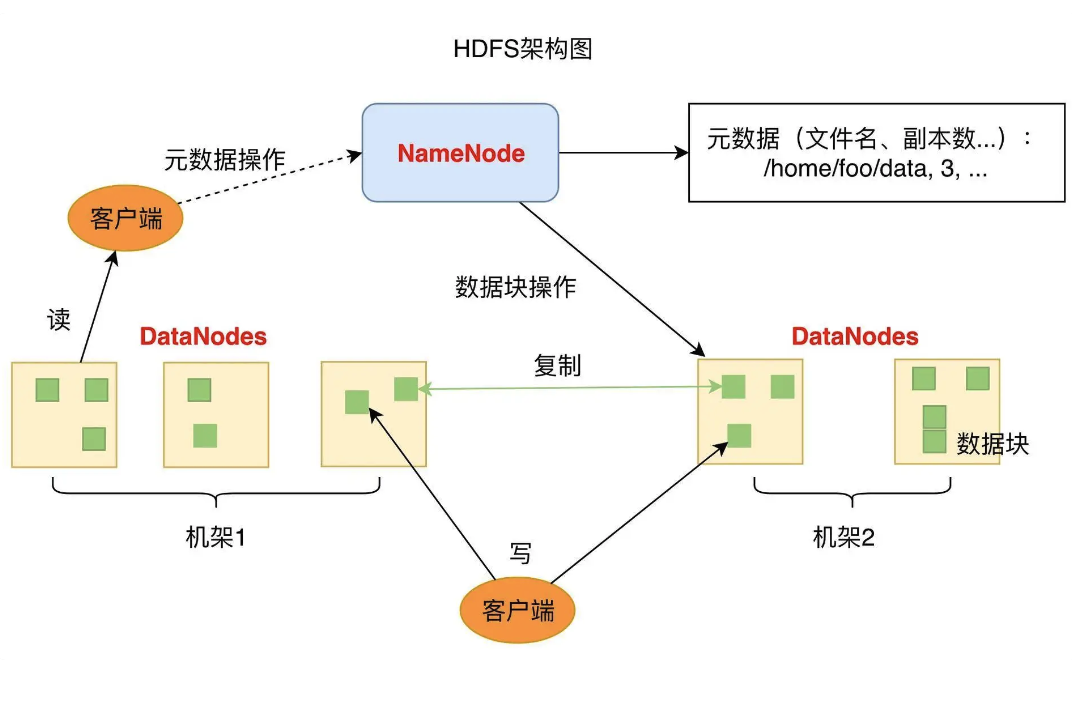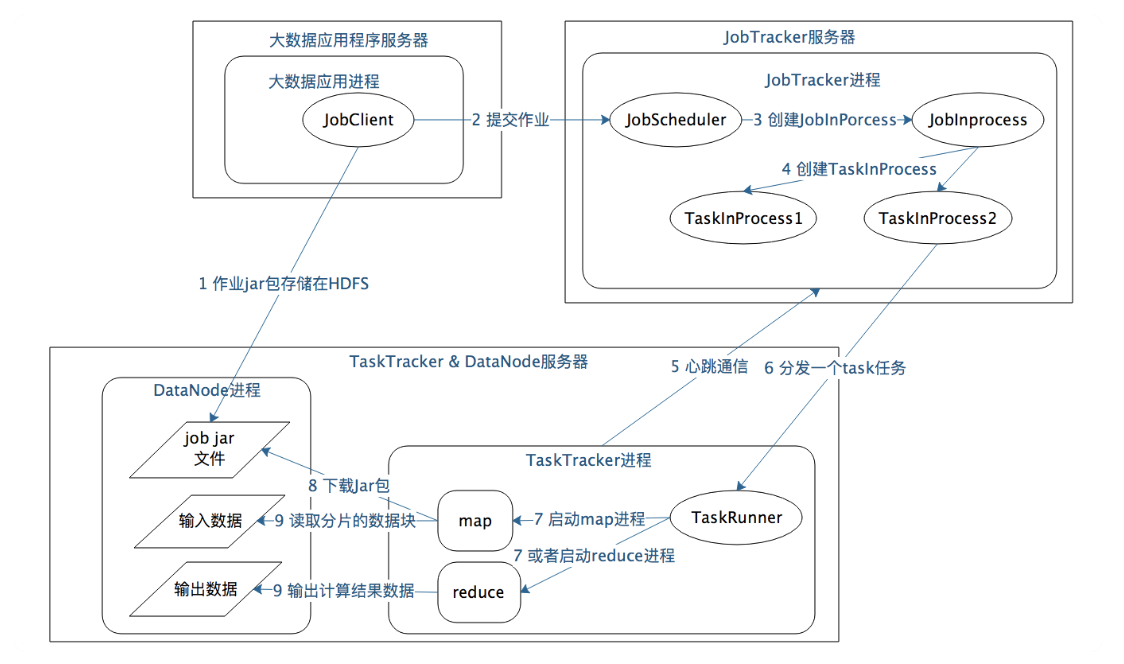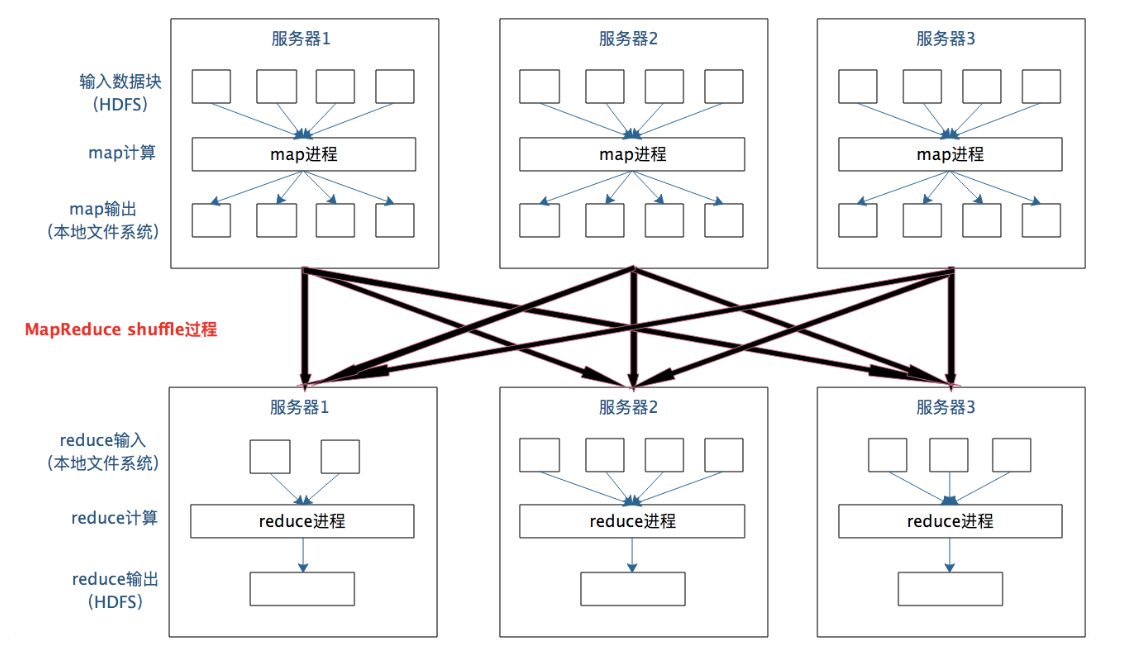Hadoop Big Data principles
Moving programs to data
Since it's expensive to move big data to a centralized machine, we move the programs to the machine where data lives. The process is as followed:
- We put data on the clusters of servers
Data is saved in HDFS files in blocks.
-
Big data engine allocates the processes to the servers based on their performance.
-
We program in Hadoop or Spark, and package the codes in JAR file (since Hadoop or Spark runs in JVM).
-
Engine finds the paths to the data, split them in pieces, and sends the pieces to processes.
-
Once the process receives the task, it will check if it has the corresponded program. If not, it will download it. Then, it executes the task.
Hadoop File System (HDFS)

-
DataNode: It handles reading and writing data. Each data node has some blocks. In pratice, there are a lot of data nodes in a cluster.
-
NameNode: It handles the metadata, such as file paths, block ID, etc. HDFS will make multiple copies for a block (usually 3), and save them on different servers.
HDFS solves the problems of read/write speed, volumn limit, and availability. Availability is the most important problem.
-
Error occurs when reading writing data
Data node will check the CheckSum when reading and writing data to make sure the data is correct.
-
Disk error
If data node dectects a disk error, it will report it to name node, and name node will check other data nodes to make the number of copies remain unchanged.
-
Data node error
Data node will send heat beat to name node to make sure that name node always know the health of data node.
-
Name node error
If name node fails, the entire HDFS fails. Name node follow main-sub pattern. There are 2 name nodes in HDFS managed by Zookeeper. Only main name node can send commands to data nodes.
To maintain the availability, there are 3 ways:
-
Redundant backup
-
Failover
If a piece of data can't be visited, we need to visit the copies.
-
Limiting
If there are too many requests, we need to limit the access to the resources.
MapReduce
The process of MapReduce is as followed:
- map a kv pair into another one ->
Map(k -> v) - group the pairs by key ->
Map(k -> Collection[v]) - reduce the key-collection pairs to result ->
Map(k -> result)

Dive into details:
-
Application process will send jobs to JobTracker server.
-
JobTracker will create tasks based the job and send tasks to TaskTracker.
-
TaskTracker will run
maporreducebased on the task.

A JobTracker has multiple TaskTracker. It's main-sub pattern.
Between map and reduce, there is another process, shuffle. It groups related data from different servers by key for the further processes.

Yarn
In Hadoop 1, JobTracker and TaskTracker handles
- send
maporreducefunction to the servers - execute these function
Yarn is created for taking over the first point. Therefore, Yarn's full name is Yet Another Resource Negotiator.

-
The client send application to Yarn, which includes MapReduce AppplicationMaster, MapReduce programs, and MapReduce Application start command.
-
ResourceManager talks to NodeManager for allocate resources, and send MapReduce ApplicationMaster to NodeManager.
-
MapReduce ApplicationMaster starts, and regirsters itself to ResourceManager for resources.
-
After receiving resource, MapReduce ApplicationMaster send MapReduce programs to NodeManager and ask it to run them.
-
During the execution, MapReduce programs reports the status to MapReduce ApplicationMaster.
-
After finishing the task, MapReduce ApplicationMaster will log out from ResourceManager and release the resource.